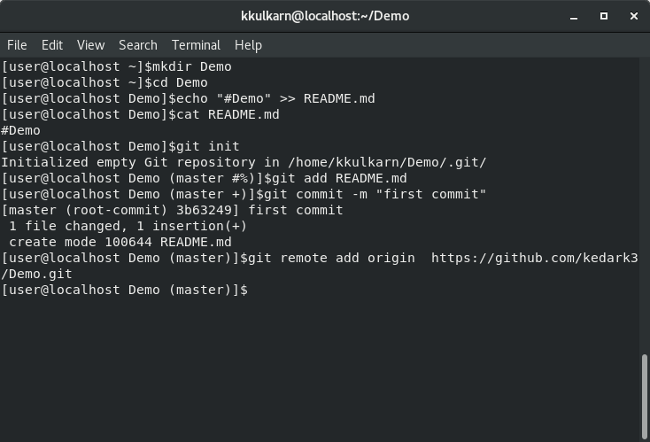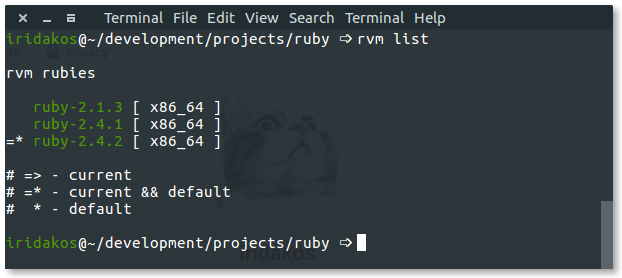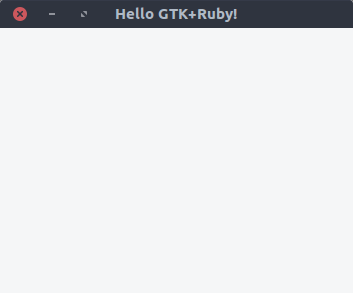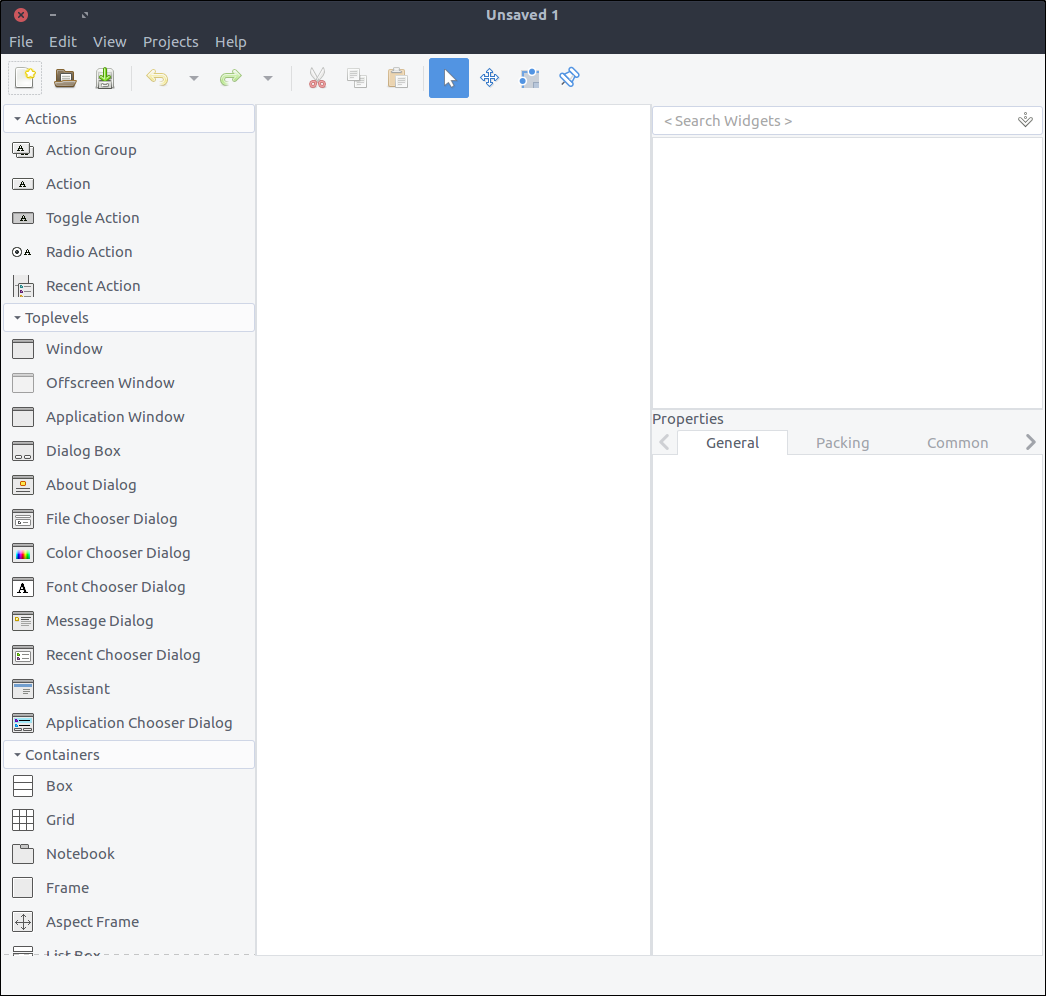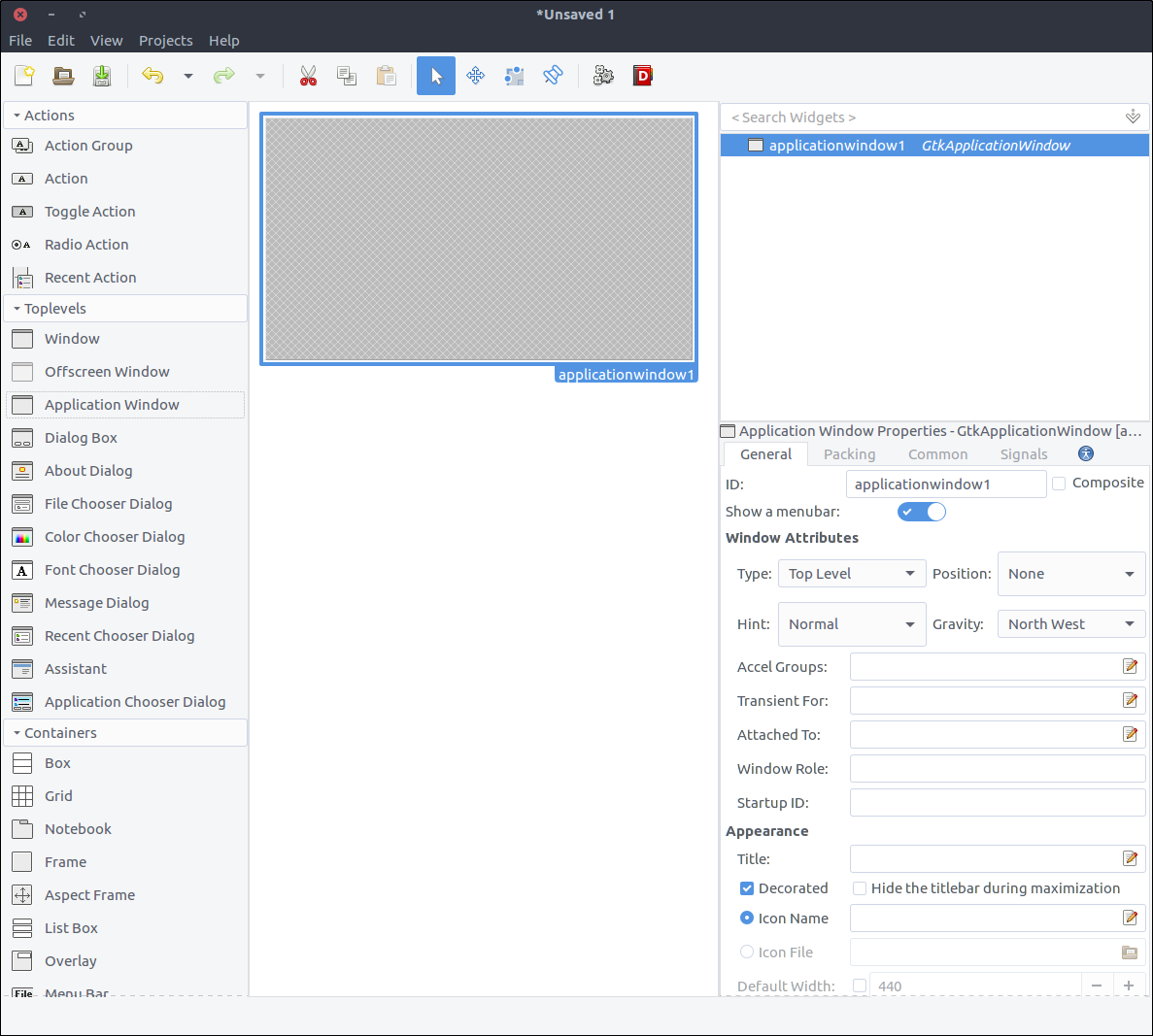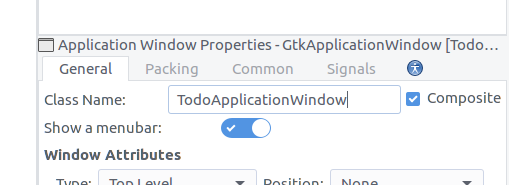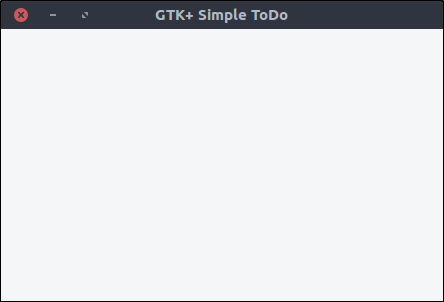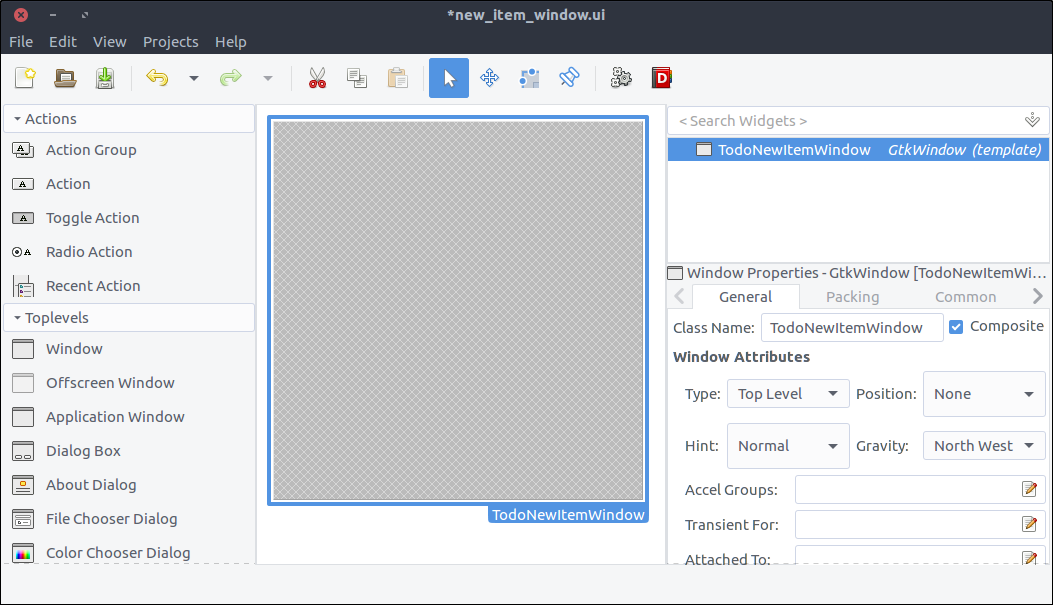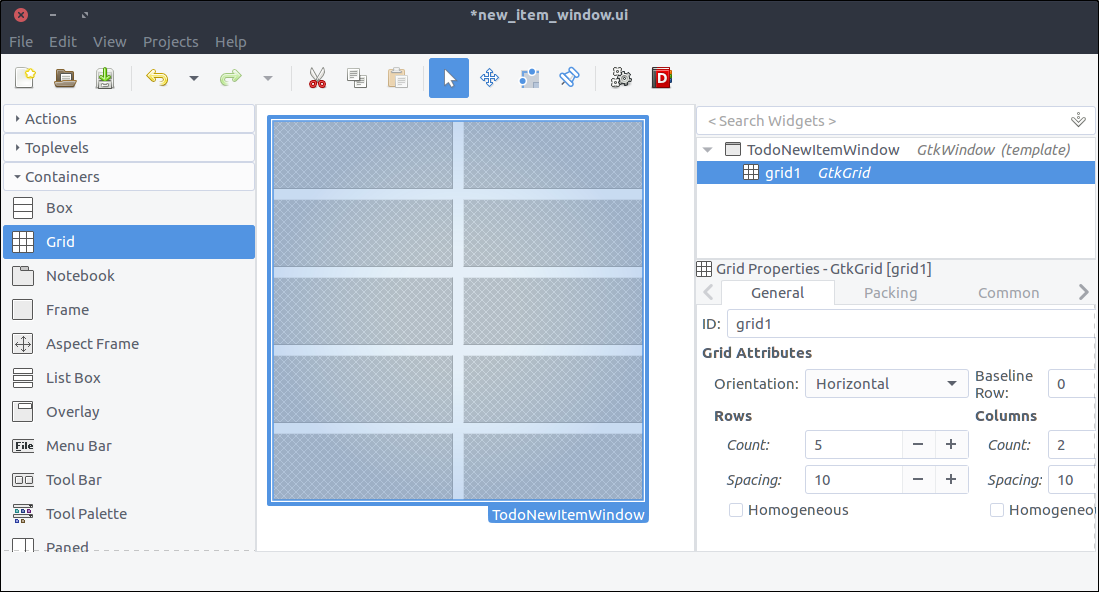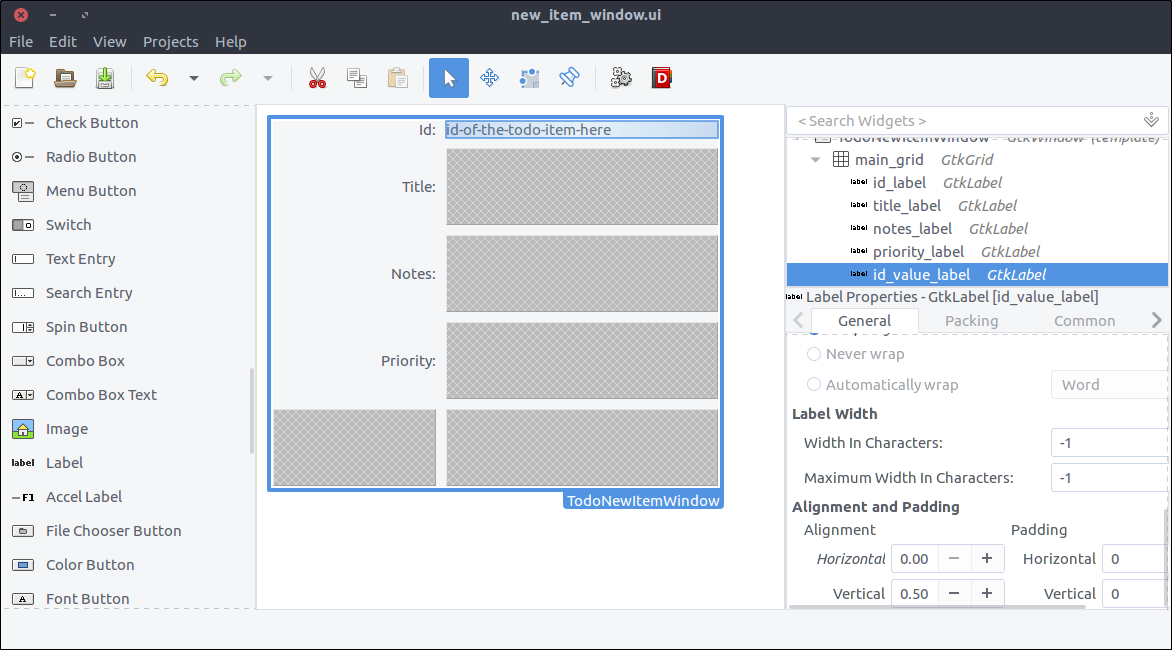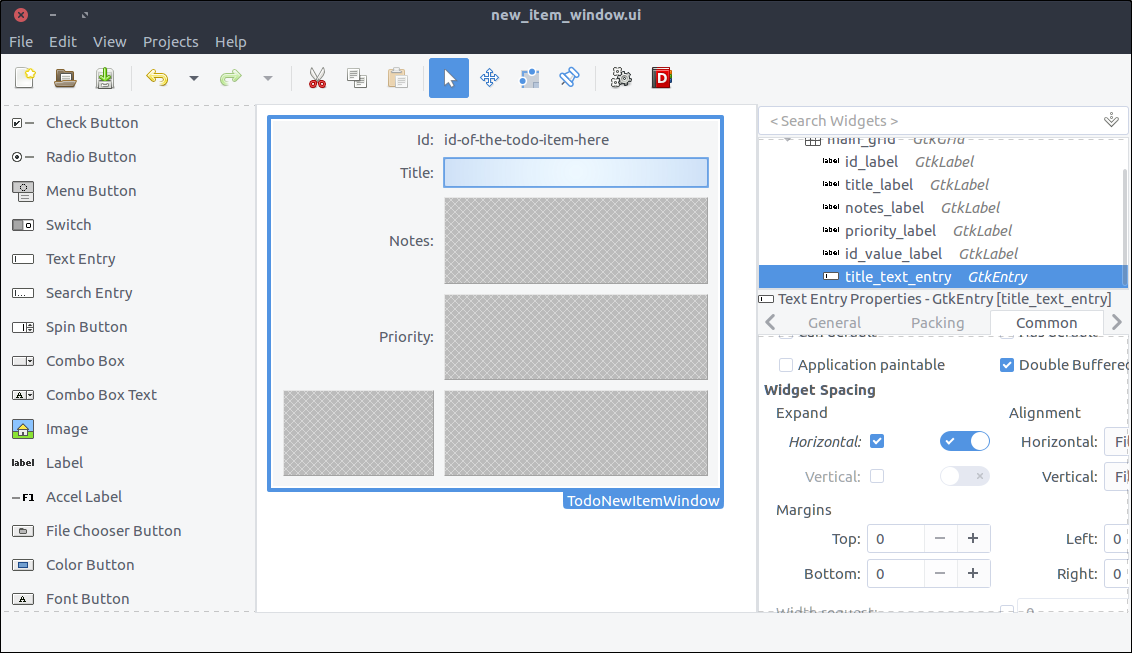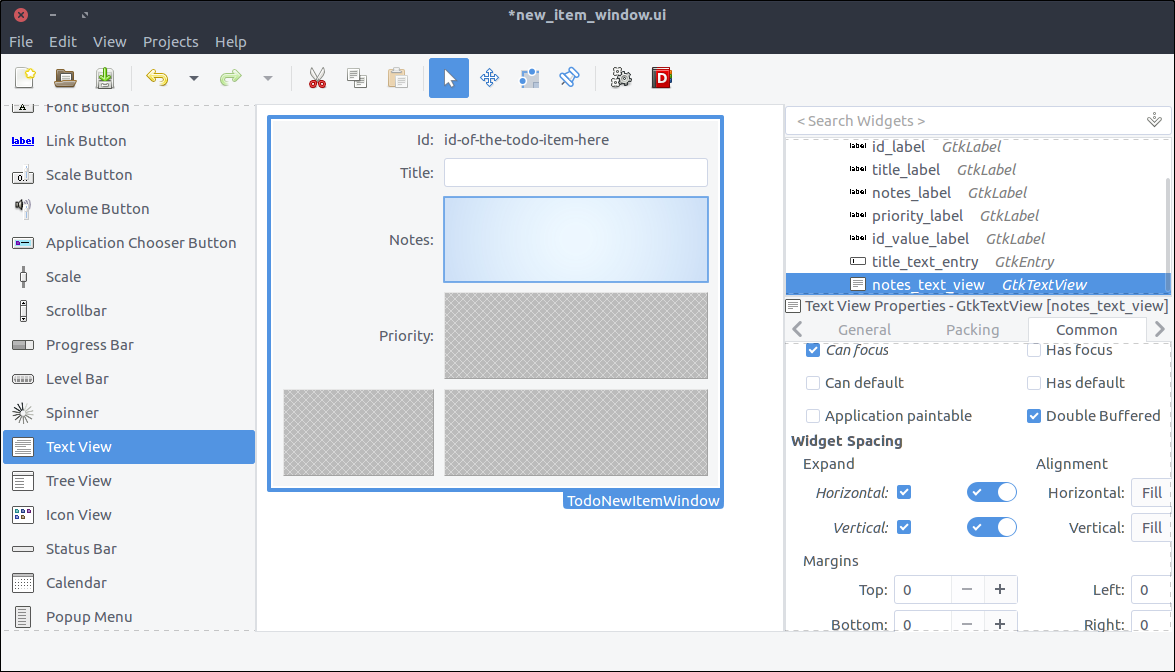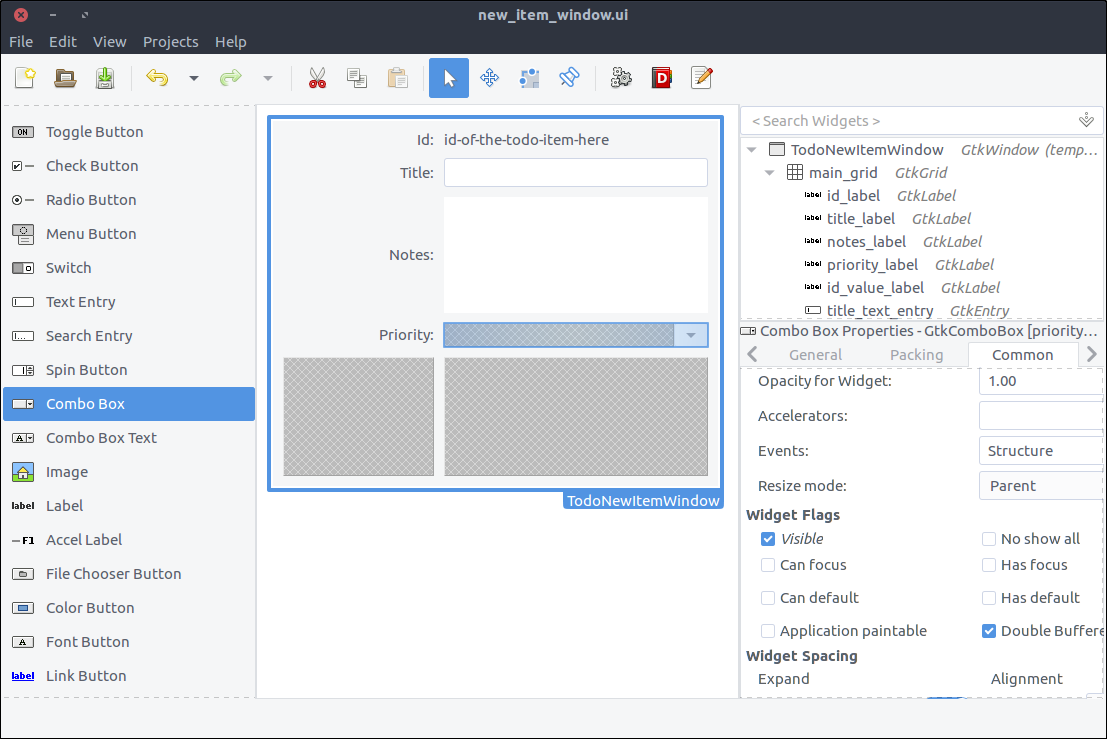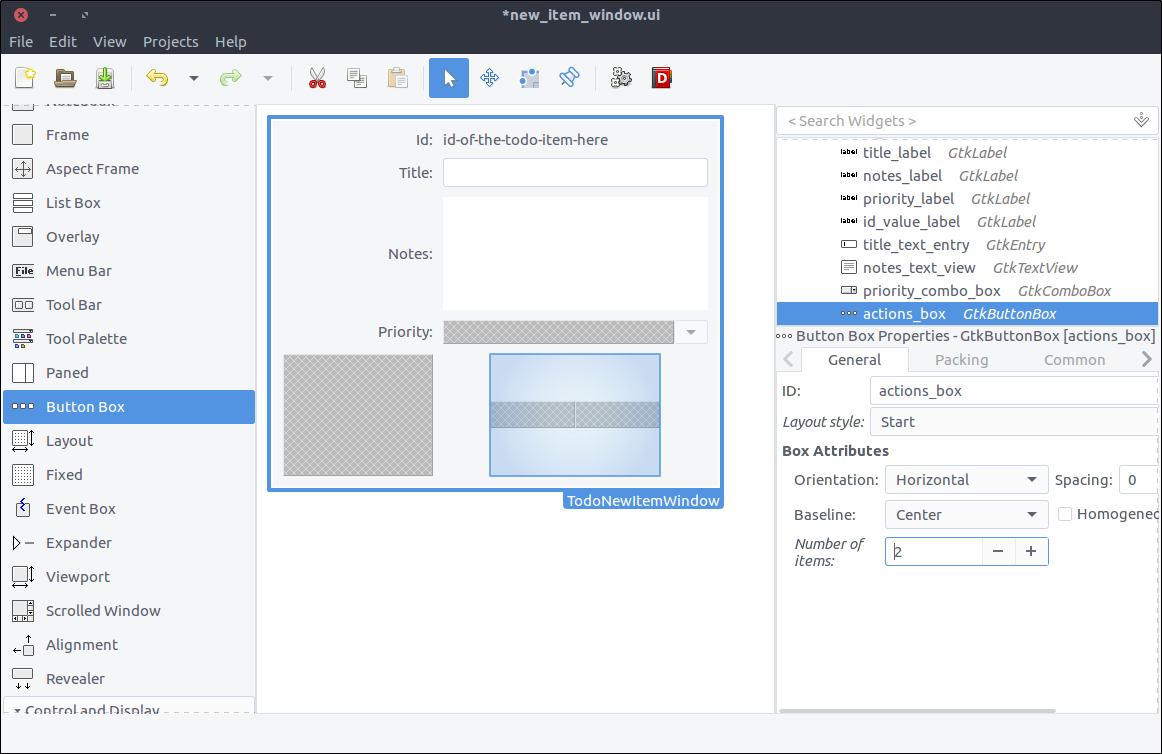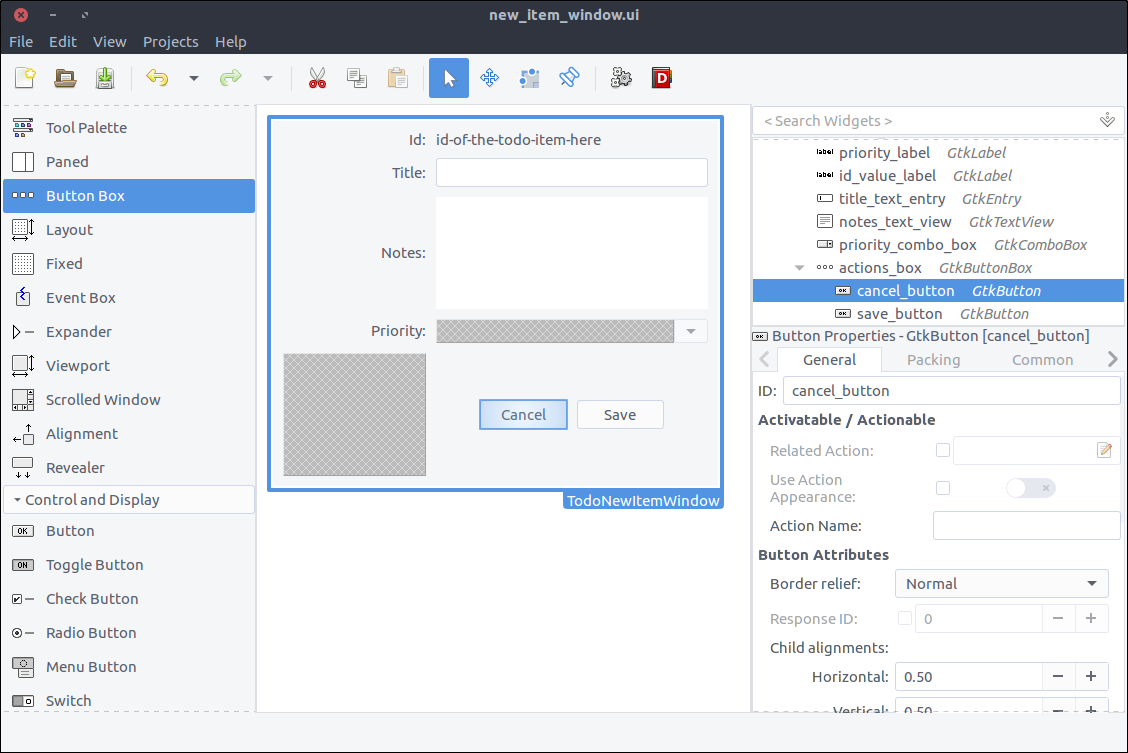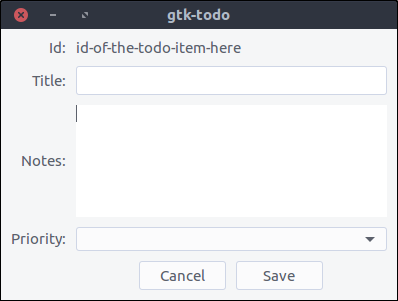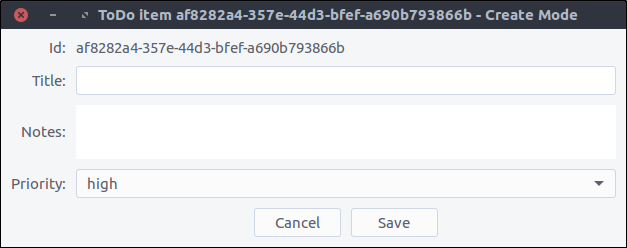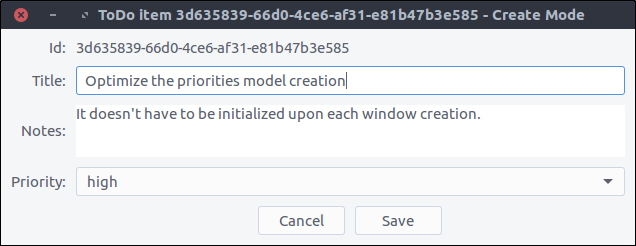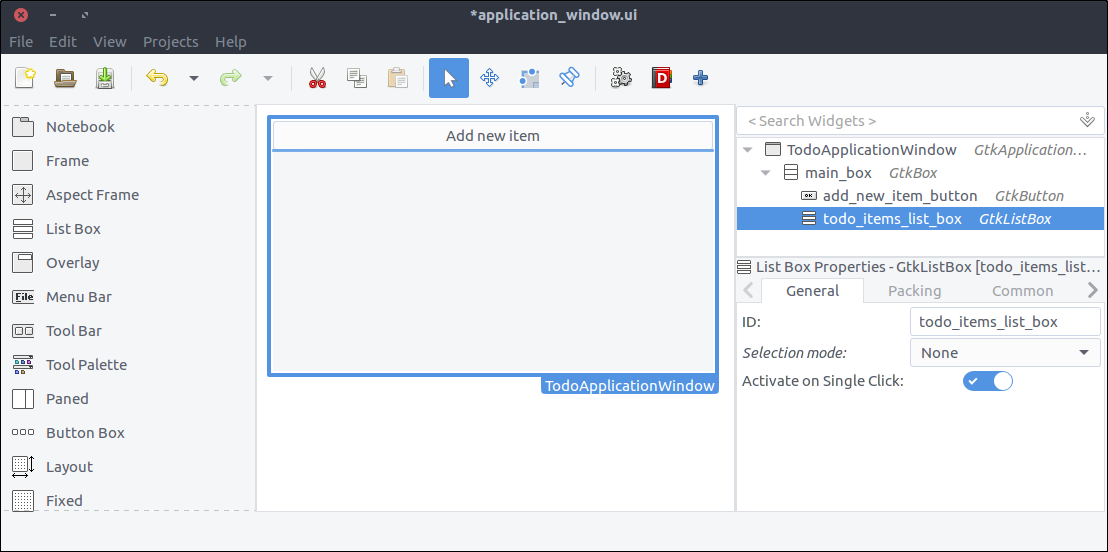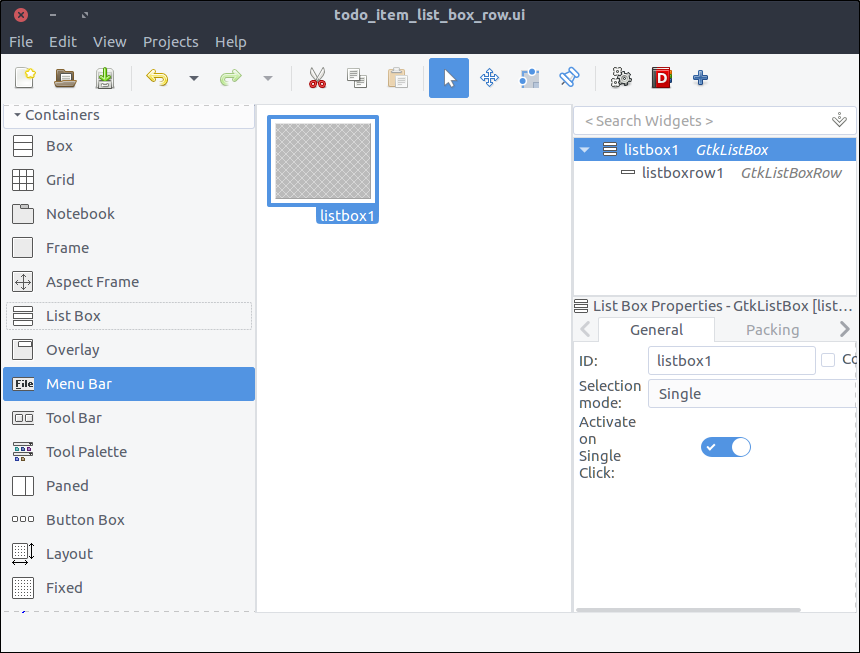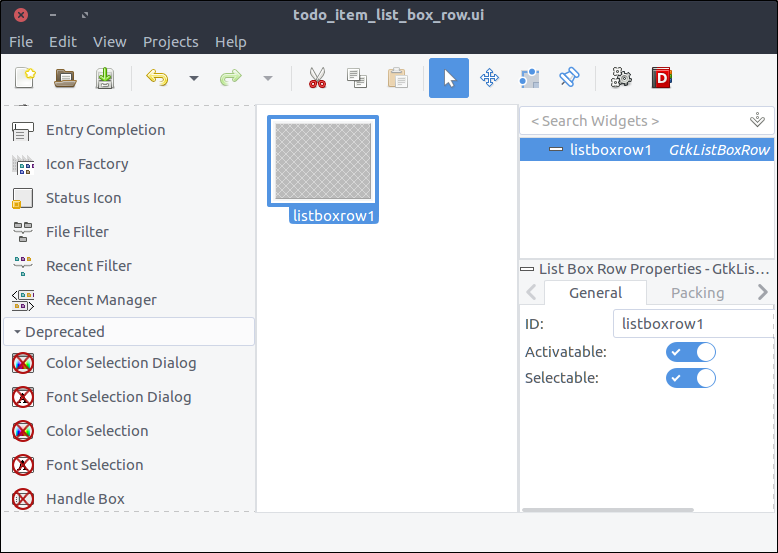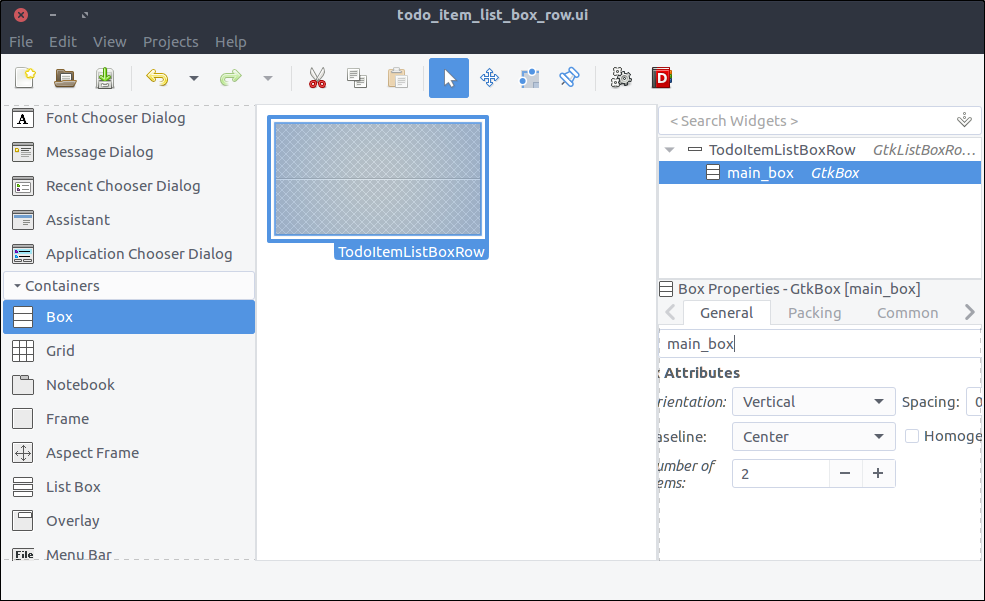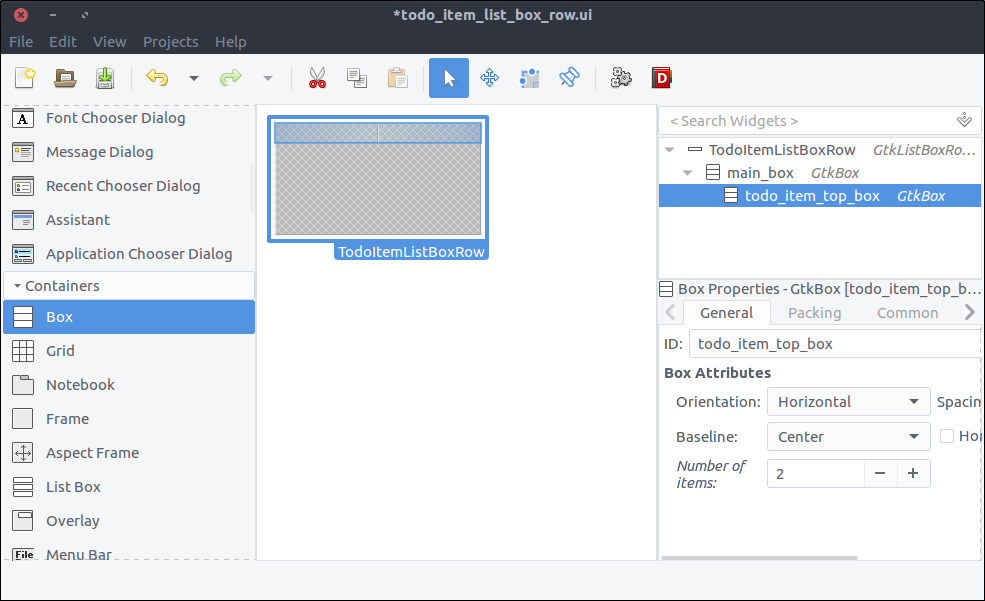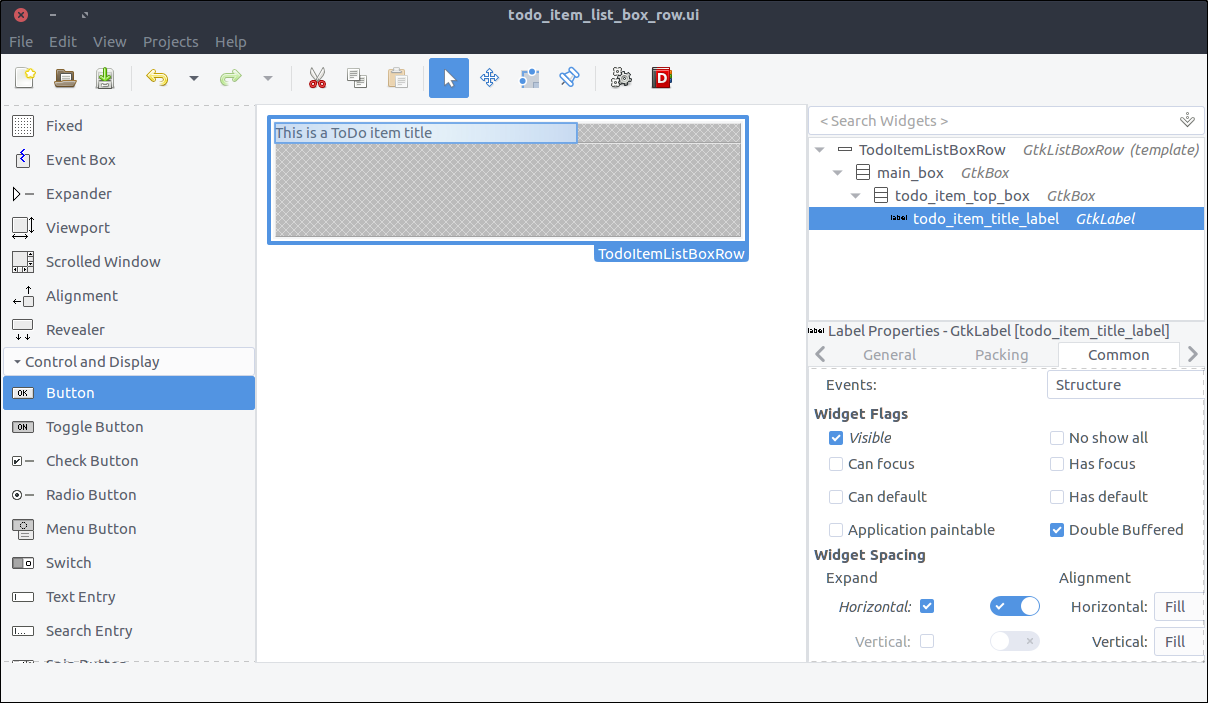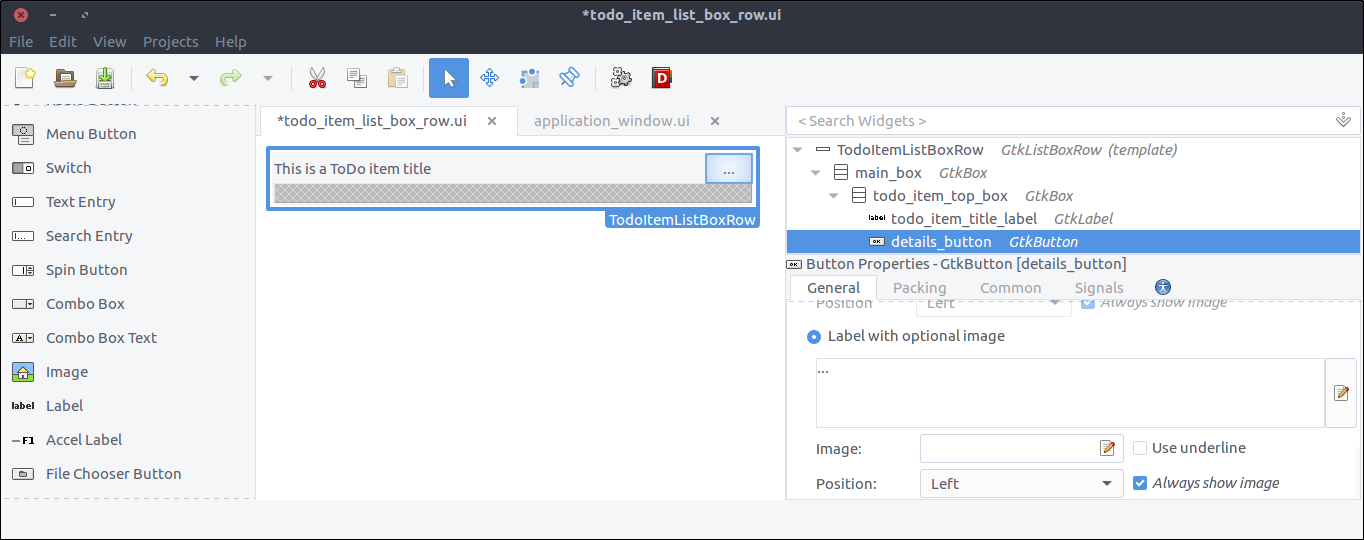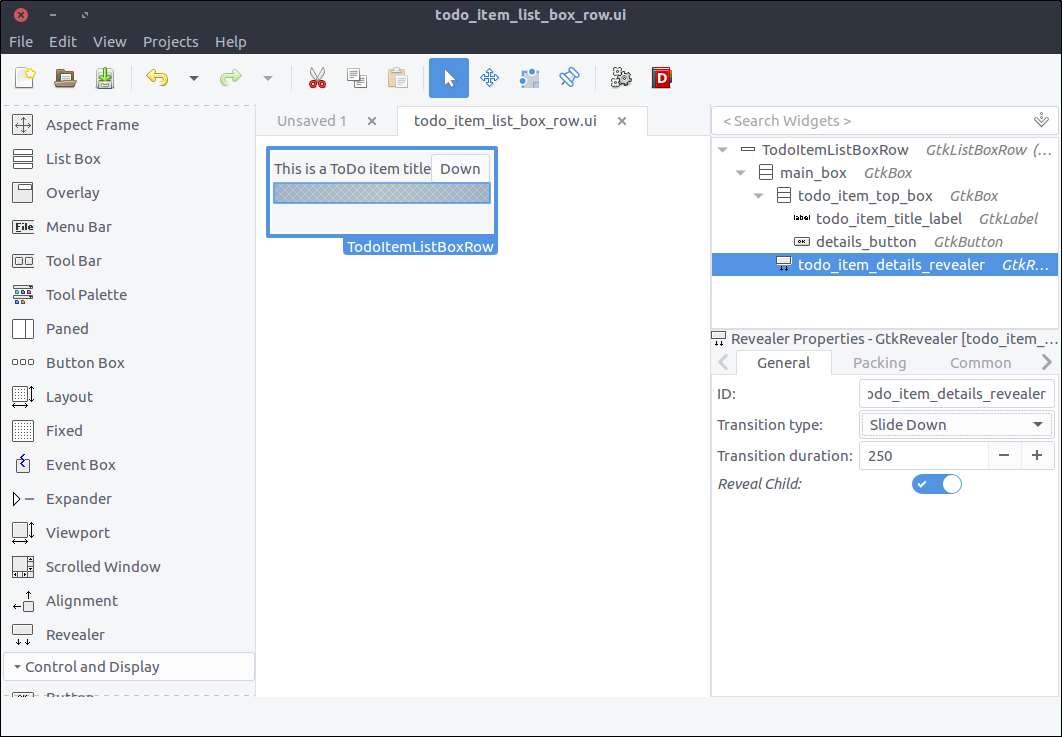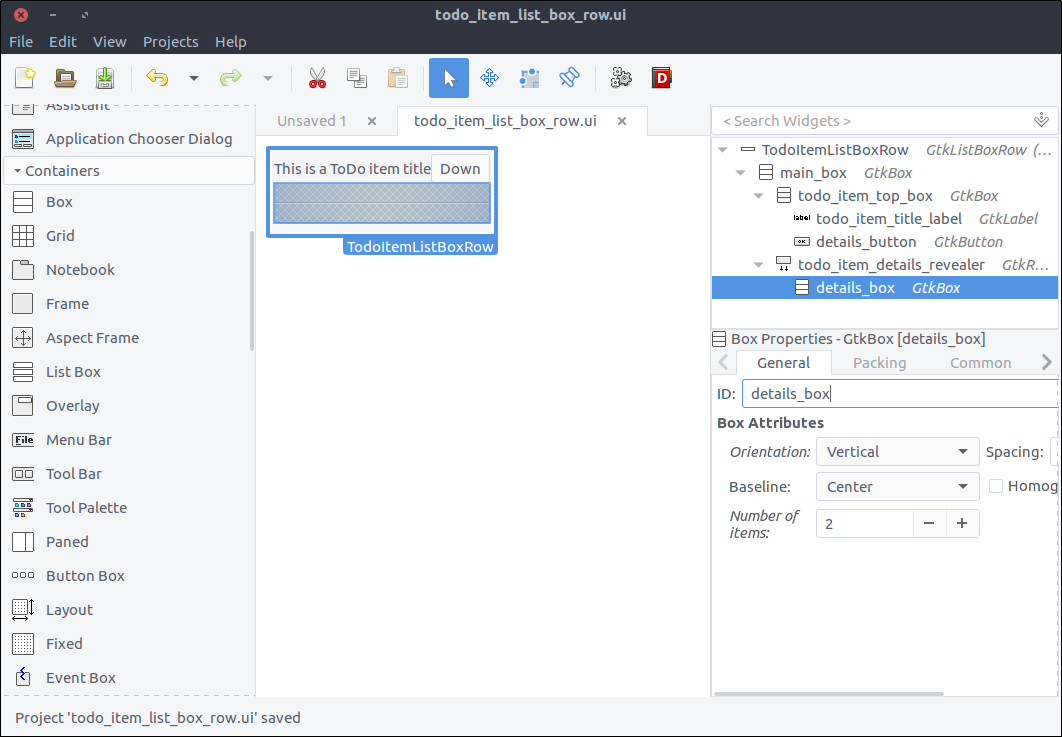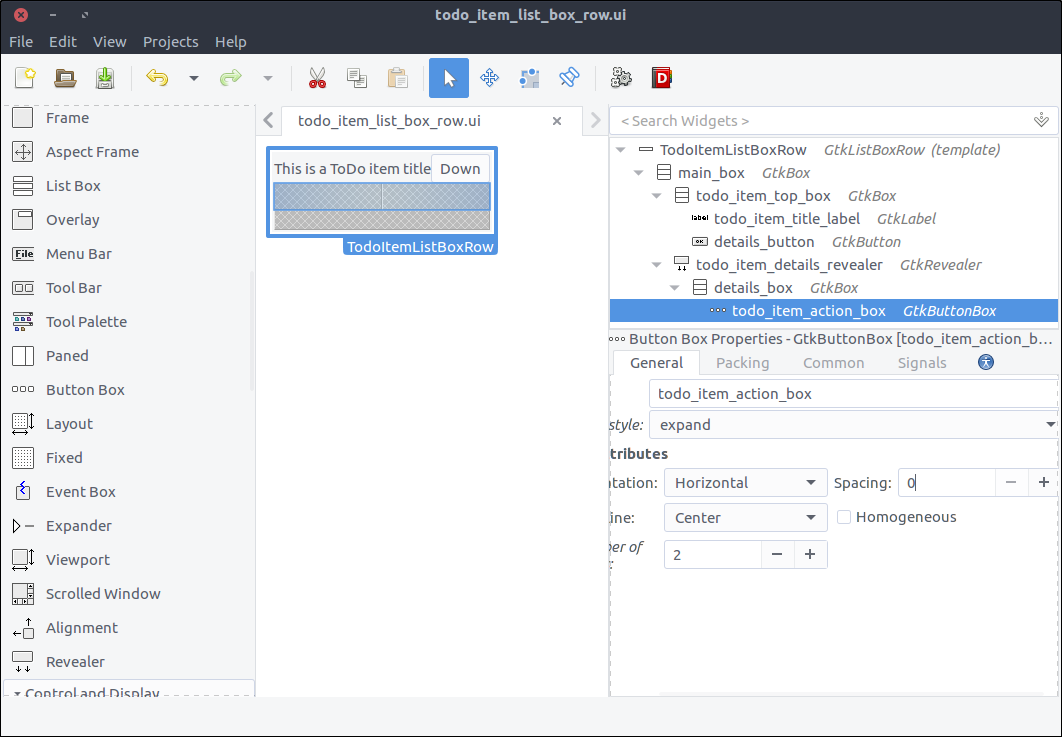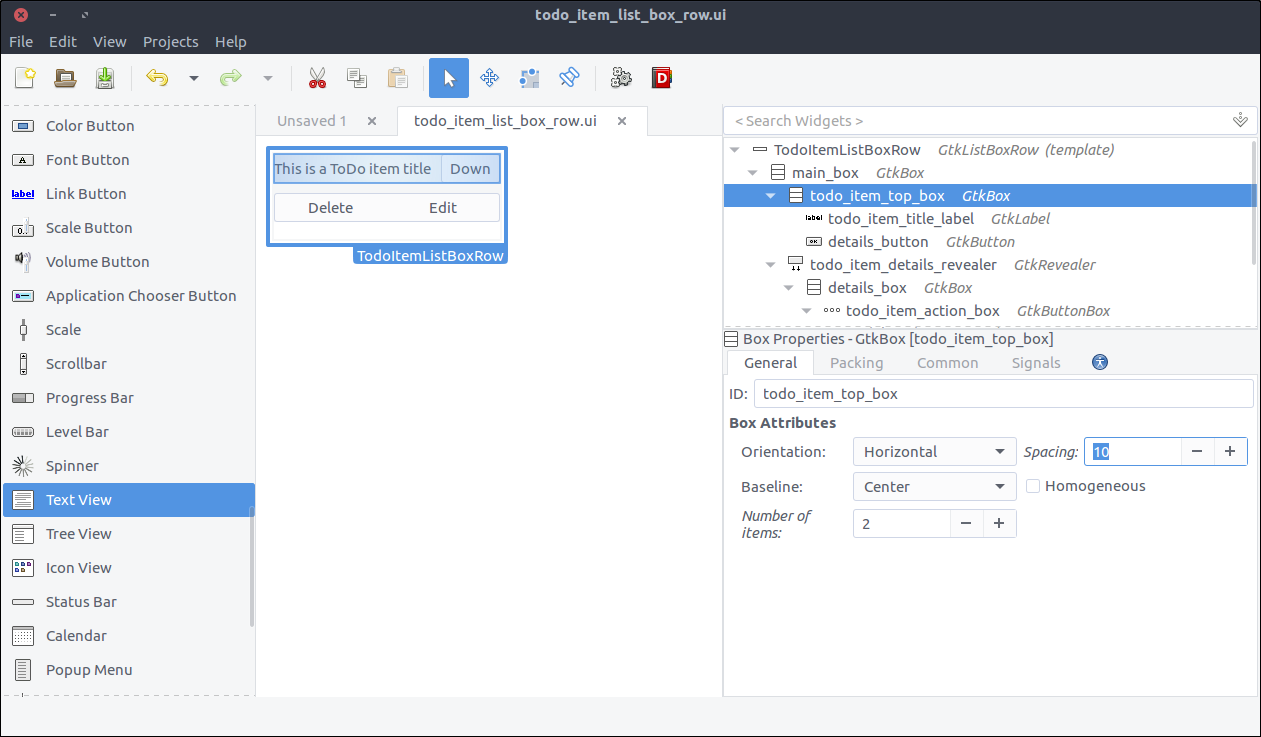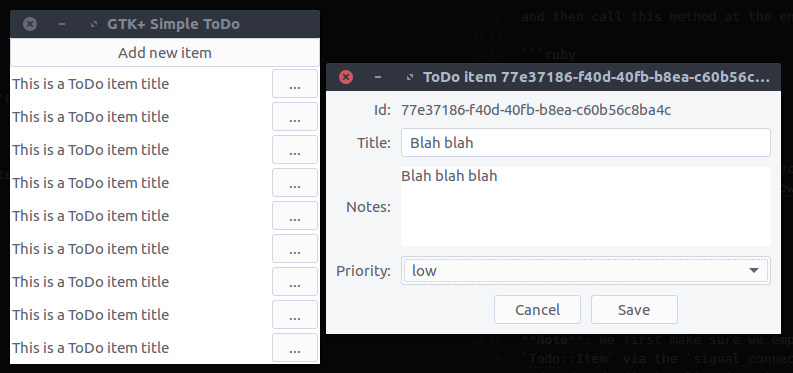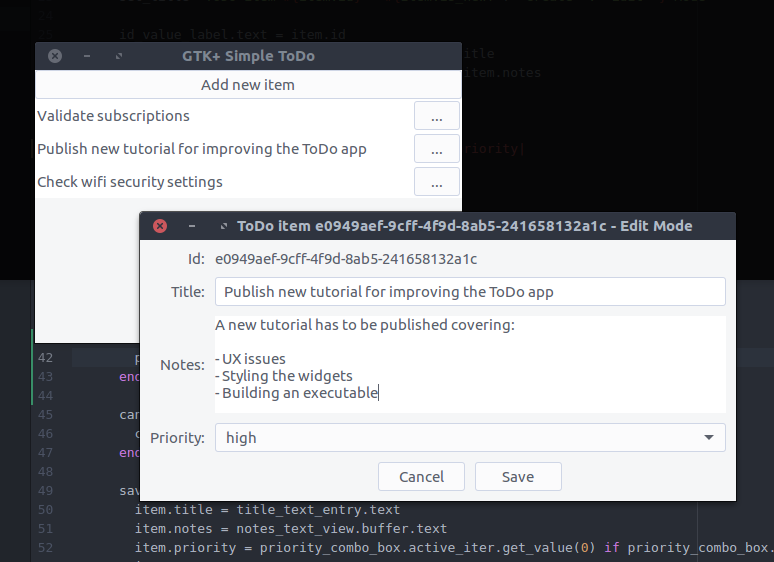http://iridakos.com/tutorials/2018/01/25/creating-a-gtk-todo-application-with-ruby
Lately I was experimenting with GTK and its Ruby bindings and I decided to write a tutorial introducing this functionality. In this post we are going to create a simple ToDo application (something like what we created
here with Ruby on Rails) using the
gtk3 gem a.k.a. the GTK+ Ruby bindings.
Note: The code of the tutorial is available at
GitHub.
What is GTK+
Quoting the toolkit’s
page:
GTK+, or the GIMP Toolkit, is a multi-platform toolkit for creating graphical user interfaces. Offering a complete set of widgets, GTK+ is suitable for projects ranging from small one-off tools to complete application suites.
..and about its
creation:
GTK+ was initially developed for and used by the GIMP, the GNU Image Manipulation Program. It is called the “The GIMP ToolKit” so that the origins of the project are remembered. Today it is more commonly known as GTK+ for short and is used by a large number of applications including the GNU project’s GNOME desktop.
Prerequisites
GTK+ version
Make sure you have GTK+ installed.
The OS in which I developed the tutorial’s application is Ubuntu 16.04 which has GTK+ installed by default (version: 3.18).
You can check yours with the following command:
Ruby
You should have ruby installed on your system. I use
RVM to manage multiple ruby versions installed on my system. If you want to go with that too, you can find instructions for installing the tool in its
homepage and for installing ruby versions (a.k.a. rubies) the
related documentation page.
This tutorial is using
Ruby 2.4.2. You can check yours using:
ruby --version or via RVM with
rvm list.
![rvm list screenshot]()
Glade
Again, quoting the tool’s
page Glade is a RAD tool to enable quick & easy development of user interfaces for the GTK+ toolkit and the GNOME desktop environment
We will use Glade to design the user interface of our application. If you are on Ubuntu, install
glade with:
gtk3 gem
This gem provides the Ruby bindings for the GTK+ toolkit. In other words, it allows us to talk to the GTK+ API using the Ruby language.
Install the gem via:
The application specs
We will build an application that:
- it will have a user interface (desktop application)
- it will allow users to set miscellaneous properties to each item (such as priority)
- it will allow users to create and edit ToDo items
- all items will be saved as files in the user’s home directory in a folder named
.gtk-todo-tutorial
- it will allow users to archive ToDo items
- archived items should be put in their own folder
archived
The application structure
gtk-todo-tutorial# root directory
|--application
|--ui# everything related to the ui of the application
|--models# our models
|--lib# the directory to host any utilities we might need
|--resources# directory to host the resources of our application
gtk-todo# the executable that will start our application
Let’s start!
Building the ToDo application
Initializing the application
Create a directory in which we will save all files that the application will need. As shown in the section above, I named mine
gtk-todo-tutorial.
In there create a file named
gtk-todo (that’s right, no extension) and add the following:
#!/usr/bin/env ruby
require'gtk3'
app=Gtk::Application.new'com.iridakos.gtk-todo',:flags_none
app.signal_connect:activatedo|application|
window=Gtk::ApplicationWindow.new(application)
window.set_title'Hello GTK+Ruby!'
window.present
end
putsapp.run
This is going to be the script that will start the application.
Note the
shebang in the first line. This is how we define which interpreter must be used to execute the script under UNIX/Linux operating systems. This way, we don’t have to use
ruby gtk-todo but just the script’s name
gtk-todo.
Don’t try it yet though because we haven’t changed the mode of the file so as to be executable. To do so, type the following command in a terminal after navigating to the application’s root directory:
chmod +x ./gtk-todo # make the script executable
Now from the console execute:
./gtk-todo # execute the script
Ta daaaaaa
![first gtk+ruby screenshot]() Notes
Notes- The application object we defined above and all of the GTK+ widgets in general, emit signals to trigger events. Once an application starts running for example, it emits a signal to trigger the
activate event. All we have to do is to define what we want to happen when this signal is emitted. We accomplished this by using the signal_connect instance method and passing it a block whose code will be executed upon the given event. We will be doing this a lot throughout the tutorial.
- When we initialized the
Gtk::Application object we passed two parameters:
com.iridakos.gtk-todo: this is our application’s id and in general it should be a reverse DNS style identifier. For more information about its usage and best practices check here.:flags_none: this is a flag defining the behavior of the application. In our case, we used the default behavior. Check here all the flags and the type of applications they define. You can use the Ruby equivalent flags as defined in Gio::ApplicationFlags.constants. For example, instead of using the :flags_none we could instead use Gio::ApplicationFlags::FLAGS_NONE
Suppose the application object we previously created (Gtk::Application) had a lot of things to do when the
activate signal was emitted or that we wanted to connect to more signals. We would end up creating a huge
gtk-todo script file making it hard to read/maintain. Time to refactor.
As described in the
The application structure section, create a folder named
application along with its sub-folders
ui,
models and
lib.
- In the
ui folder we will place all files related to our user interface. - In the
models folder we will place all files related to our models. - In the
lib folder we will place all other files that don’t belong to either of the aforementioned folders.
We are going to define a new subclass of the
Gtk::Application class for our application. Create a file named
application.rb under
application/ui/todo with the following contents.
moduleToDo
classApplication<Gtk::Application
definitialize
super'com.iridakos.gtk-todo',Gio::ApplicationFlags::FLAGS_NONE
signal_connect:activatedo|application|
window=Gtk::ApplicationWindow.new(application)
window.set_title'Hello GTK+Ruby!'
window.present
end
end
end
end
and change the
gtk-todo script accordingly:
#!/usr/bin/env ruby
require'gtk3'
app=ToDo::Application.new
putsapp.run
Much cleaner, isn’t it? Yeah, but it doesn’t work. You should be getting something like:
./gtk-todo:5:in `': uninitialized constant ToDo (NameError)
The problem is that we haven’t required any of the ruby files placed in the
application folder. Change the script file as follows and execute it again.
#!/usr/bin/env ruby
require'gtk3'
# Require all ruby files in the application folder recursively
application_root_path=File.expand_path(__dir__)
Dir[File.join(application_root_path,'**','*.rb')].each{|file|requirefile}
app=ToDo::Application.new
putsapp.run
You should be fine.
Resources
At the beginning of this tutorial we said that we would use Glade to design the user interface of the application. Glade actually produces
xml files with the appropriate elements and attributes that reflect what we designed via its user interface. We somehow need to make use of these files so that our application gets the UI we designed.
These files are resources for the application and the GResource API provides a way for packing them all together in a binary file and afterwards accessing them from inside the application with advantages as opposed to manually having to deal with already loaded resources, their location on the file system etc. Read more about the API
here.
Describing the resources
First, we need to create a file describing the resources of the application. Create a file named
gresources.xml and place it directly under the
resources folder.
prefix="/com/iridakos/gtk-todo">
preprocess="xml-stripblanks">ui/application_window.ui
In this “description” we actually say: we have a resource which is located under the
ui directory (relative to this
xml file) with name
application_window.ui. Before loading this resource please remove the blanks. Thanks. Of course this is not going to work now since we haven’t created the resource via Glade yet. Don’t worry though, one thing at a time.
Note: the
xml-stripblanks directive will use the
xmllint command to remove the blanks. In Ubuntu you have to install the package
libxml2-utils to obtain it.
Building the resources binary file
In order to produce the binary resources file, we are going to use another utility of the GLib library called
glib-compile-resources. Check if you have it installed with
dpkg -l libglib2.0-bin. You should be seeing something like this:
ii libglib2.0-bin 2.48.2-0ubuntu amd64 Programs for the GLib library
If not, then install the package (
sudo apt install libglib2.0-bin in Ubuntu).
Let’s build the file. We will add the code in our script so that the resources are getting built every time we execute it. Change the
gtk-todo script as follows.
#!/usr/bin/env ruby
require'gtk3'
require'fileutils'
# Require all ruby files in the application folder recursively
application_root_path=File.expand_path(__dir__)
Dir[File.join(application_root_path,'**','*.rb')].each{|file|requirefile}
# Define the source & target files of the glib-compile-resources command
resource_xml=File.join(application_root_path,'resources','gresources.xml')
resource_bin=File.join(application_root_path,'gresource.bin')
# Build the binary
system("glib-compile-resources",
"--target",resource_bin,
"--sourcedir",File.dirname(resource_xml),
resource_xml)
at_exitdo
# Before existing, please remove the binary we produced, thanks.
FileUtils.rm_f(resource_bin)
end
app=ToDo::Application.new
putsapp.run
and execute it. This happens in the console and it’s fine, we’ll fix it later on:
/.../gtk-todo-tutorial/resources/gresources.xml: Failed to locate 'ui/application_window.ui' in any source directory.
What we did:
- added a
require statement for the fileutils library so that we can use it in the at_exit call - defined the source and target files of the
glib-compile-resources command - executed the
glib-compile-resources command - set a hook so that before exiting the script (before the application exits) the binary file gets deleted so next time it gets build again
Loading the resources binary file
Ok, we described the resources, we packed them in a binary file. Now we have to load them and register them in the application so that we can use them. This is so easy as adding the following two lines before the
at_exit hook.
resource=Gio::Resource.load(resource_bin)
Gio::Resources.register(resource)
That’s it. From now on, we are able to use the resources from anywhere inside the application (we’ll see how later on). Well now the script fails since it can’t load the binary which is not produced but…be patient, we are going to get to the interesting part soon. Actually now.
Designing the main application window
Introducing glade
Open glade.
![Glade empty project screen]()
A quick description of what you see.
- On the left section there is a list of widgets which you can drag and drop in the middle section given that a widget can be placed there. For example, you can’t add a top level window inside a label widget. I will be calling this as the Widget section from now on.
- On the middle section you see your widgets as they will appear (most of the times) in the application. I will be calling this as the Design section from now on.
- On the right section there are two subsections:
- the top section contains the hierarchy of the widgets as added to the resource. I will be calling this as the Hierarchy section from now on.
- the bottom section contains all the properties that you can configure via Glade for a given selected widget of the aforementioned top section. I will be calling this as the Properties section from now on.
I will try to describe the steps for building this tutorial’s UI using Glade but if you are interested in building GTK+ applications you should take a look at the resources & tutorials for using the tool on the
official page.
Create the application window design
We are going to create the application window. As you can guess, all we have to do is drag the widget ‘Application Window’ from the widget section to the design section.
![Glade application window]()
Gtk::Builder is an object used in GTK+ applications to read textual descriptions of a user interface (like the one we will build via Glade) and build the described objects-widgets.
In the properties section, the first property is the
ID and it has a default value
applicationWindow1. If we let this property as is, then later on, through our code we would create a
Gtk::Builder that would load the file produced by glade and in order to obtain the application window we would have to use something line:
application_window=builder.get_object('applicationWindow1')
application_window.signal_connect'whatever'do|a,b|
...
The
application_window object would be of class
Gtk::ApplicationWindow and thus whatever we had to add to its behavior (like setting its title) would take place out of the original class. Also, as shown in the snippet above, the code to connect to a signal of the window would be placed inside the file that instantiated it.
Good news though, a GTK+
feature introduced in 2013 allows the creation of composite widget templates which among other advantages allows as to define the custom class for the widget (which eventually derives from an existing GTK::Widget class in general). Don’t worry if you are confused. You are going to understand what is going on after we write some code and view the results.
Now, in order to define our design as a template, check the
Composite checkbox in the property widget. Note that the
ID property changed to
Class Name. Fill in there
TodoApplicationWindow. This is the class we are going to create in our code to represent this widget.
![Glade application window composite]()
Save the file with name
application_window.ui in a new folder named
ui inside the
resources. If you open the file from an editor you will see this:
lib="gtk+"version="3.12"/>
class="TodoApplicationWindow"parent="GtkApplicationWindow">
name="can_focus">False
As you can see, our widget has a class and parent attribute. Following the parent class attribute convention, obviously, our class has to be defined inside a module named
Todo. Before getting there, let’s try to start the application by executing the script (
./gtk-todo).
Yeah! It starts!
Create the application window class
While running the application, if you check the contents of the application’s root directory you can see the
gresource.bin file there. Even though the application starts successfully because the resource bin is present and it can register it, we do not use it yet. We still initiate an ordinary
Gtk::ApplicationWindow in our
application.rb file and that all we show. Time to create our custom application window class.
Create a file named
application_window.rb, place it under
application/ui/todo folder and add the following content.
moduleTodo
classApplicationWindow<Gtk::ApplicationWindow
# Register the class in the GLib world
type_register
class<<self
definit
# Set the template from the resources binary
set_templateresource: '/com/iridakos/gtk-todo/ui/application_window.ui'
end
end
definitialize(application)
superapplication: application
set_title'GTK+ Simple ToDo'
end
end
end
We defined the
init method as a singleton method on the class after opening the
eigenclass in order to bind the template of this widget to the previously registered resource file.
Before that, we called the
type_register class method which registers and make available our custom widget class to the
GLib world.
Finally, each time we create an instance of this window, we set its title to
GTK+ Simple ToDo.
Now, let’s go back to the
application.rb file and use what we just implemented:
moduleToDo
classApplication<Gtk::Application
definitialize
super'com.iridakos.gtk-todo',Gio::ApplicationFlags::FLAGS_NONE
signal_connect:activatedo|application|
window=Todo::ApplicationWindow.new(application)
window.present
end
end
end
end
Execute the script.
![GTK+ ToDo window]()
Define the model
For simplicity, we are going to save the ToDo items in files in json format under a dedicated hidden folder in user’s home directory. Of course, in a real life application we would use a database but this is out of the scope of this tutorial.
Our
Todo::Item model will have the following properties:
- id: the id of the item
- title: the title
- notes: any notes
- priority: its priority
- creation_datetime: the date & time the item was created
- filename: the name of the file that an item is saved to
Create a file named
item.rb under the
application/models directory, with contents:
require'securerandom'
require'json'
moduleTodo
classItem
PROPERTIES=[:id,:title,:notes,:priority,:filename,:creation_datetime].freeze
PRIORITIES=['high','medium','normal','low'].freeze
attr_accessor*PROPERTIES
definitialize(options={})
ifuser_data_path=options[:user_data_path]
# New item. When saved, it will be placed under the :user_data_path value
@id=SecureRandom.uuid
@creation_datetime=Time.now.to_s
@filename="#{user_data_path}/#{id}.json"
elsiffilename=options[:filename]
# Load an existing item
load_from_filefilename
else
raiseArgumentError,'Please specify the :user_data_path for new item or the :filename to load existing'
end
end
# Loads an item from a file
defload_from_file(filename)
properties=JSON.parse(File.read(filename))
# Assign the properties
PROPERTIES.eachdo|property|
self.send"#{property}=",properties[property.to_s]
end
rescue=>e
raiseArgumentError,"Failed to load existing item: #{e.message}"
end
# Resolves if an item is new
defis_new?
!File.exists?@filename
end
# Saves an item to its `filename` location
defsave!
File.open(@filename,'w')do|file|
file.writeself.to_json
end
end
# Deletes an item
defdelete!
raise'Item is not saved!'ifis_new?
File.delete(@filename)
end
# Produces a json string for the item
defto_json
result={}
PROPERTIES.eachdo|prop|
result[prop]=self.sendprop
end
result.to_json
end
end
end
As you can see, we defined methods to:
- initialize an item
- as new by defining the
:user_data_path in which it will be saved later on - as existing by defining the
:filename to be loaded from. The filename must be a json file previously generated by an item
- load an item from a file
- resolve whether an items is new or not (saved at least once in the
:user_data_path or not) - save an item by writing its json string to a file
- delete an item
- produce the json string of an item as a hash of its properties
Add a new item
Let’s add a button to our application window for adding a new item. Open the
resources/ui/application_window.ui file in glade.
- Drag a
Button from the widget section to the design section. - In the properties section, set its ID value to
add_new_item_button. - Near the bottom of the General tab in the properties section there’s a text area just below the Label with optional image option. Change its value from button to Add new item
- Save the file and execute the script
![Add new item button in application window]()
Don’t worry, we will improve the design later on. Now, let’s see how to
connect functionality to our button’s
clicked event.
First, we have to update our application window class so that it learns about its new child, the button with id
add_new_item_button. Then, we can access the child to alter its behavior.
Change the
init method as follows:
definit
# Set the template from the resources binary
set_templateresource: '/com/iridakos/gtk-todo/ui/application_window.ui'
bind_template_child'add_new_item_button'
end
Pretty simple, right? The
bind_template_child method does exactly what it says and from now on every instance of our
Todo::ApplicationWindow class will have an
add_new_item_button method to access the related button. So, let’s alter the
initialize method as follows.
definitialize(application)
superapplication: application
set_title'GTK+ Simple ToDo'
add_new_item_button.signal_connect'clicked'do|button,application|
puts"OMG! I AM CLICKED"
end
end
As you can see, we access the button by the
add_new_item_button method and we define what we want to take place when clicked. Restart the application and try clicking it. In the console you should see the message
OMG! I AM CLICKED every time you click the button.
What we want though to happen when we click this button is to show a new window through which we will save a ToDo item. You guessed right. Glade o’clock.
Create the new item window
- Create a new project in Glade by pressing the most left icon of the top bar or by selecting File > New from the application menu.
- Drag a
Window from the widget section to the design area. - Check its
Composite property and name the class TodoNewItemWindow.
![GTK+ Todo new item window empty]()
- Drag a
Grid from the widget section and place it in the window we added in the previous steps. - Set its rows number to 5 and its columns number to 2 in the window that popped up.
- In the General tab of its properties window, set its Rows spacing and Columns spacing to 10 (the numbers are in pixels).
- In the Common tab of the properties section, set the
Widget Spacing > Margins > Top, Bottom, Left, Right all to 10 so that the contents are not stuck to the borders of the window.
![GTK+ Todo new item window with grid]()
- Drag four times a
Label widget from the widget section and place them in each row of the Grid. - Change their
Label property from top to bottom as: - In the General tab of the properties section, change the Alignment and Padding > Alignment > Horizontal property from 0.50 to 1 for each property. This will align the label text on the right.
- This step is optional but I suggest that you do it: We will not bind these labels in our window since we don’t need to alter their state or behavior. So in this context, we don’t need to set a descriptive id for each of them like we did for the
add_new_item_button button in the application window. BUT. We are going to add more elements to our design and the hierarchy of the widgets in Glade will be hard to read with all the label1. label2. So set a descriptive id to each to make our lives easier (like id_label, title_label, notes_label, priority_label). I even set the grid’s id to main_grid cause I don’t like seeing numbers in ids or variable names :)
![GTK+ Todo new item with grid and labels]()
- Drag a
Label from the widget section to the second column of the grid’s first row. The id is automatically generated by our model thus we won’t allow editing so a label to display it is more than enough. - Set the
ID property to id_value_label. - Set the Alignment and Padding > Alignment > Horizontal property to 0 so that the text aligns on the left.
- We are going to bind this widget to our window class so that we can change its text each time we load the window so setting a label through glade is not needed but doing so makes the design look closer to what it’ll look like when rendered with actual data. So you can optionally set a label here to whatever suits you better. I set mine to
id-of-the-todo-item-here.
![GTK+ Todo new item with grid and labels]()
- Drag a
Text Entry from the widget section to the second column of the second row of the grid. - Set its ‘ID’ property to
title_text_entry. As you may have noticed, I prefer obtaining the widget type in the id so that the code in the class becomes more readable later on. - In the Common tab of the properties section, check the
Widget Spacing > Expand > Horizontal checkbox and turn on the switch which is right next to it. This way, the widget will expand horizontally every time its parent (a.k.a. the grid) is resized.
![GTK+ Todo new item with grid and labels]()
- Drag a
Text View from the widget section to the second column of the third row of the grid. - Set its
ID to notes. Nope, just testing you. Set its ID property to notes_text_view. - In the Common tab of the properties section, check the
Widget Spacing > Expand > Horizontal, Vertical checkboxes and turn on the switches which are right next to them. This way, the widget will expand horizontally and vertically every time its parent (a.k.a. the grid) is resized.
![GTK+ Todo new item with grid and labels]()
- Drag a
Combo Box from the widget section to the second column of the forth row of the grid. - Set its
ID to priority_combo_box. - In the Common tab of the properties section, check the
Widget Spacing > Expand > Horizontal checkbox and turn on the switch which is right next to it. This way, the widget will expand horizontally every time its parent (a.k.a. the grid) is resized. - This widget is actually a drop down element and we are going to populate its values that can be selected by the user when it shows up inside our window class.
![GTK+ Todo new item with grid and labels]()
- Drag a
Button Box from the widget section to the second column of the last row of the grid. - On the popped up window select 2 number of items.
- In the General tab of the properties section set the Box Attributes > Orientation property to Horizontal.
- In the General tab of the properties section set the Box Attributes > Spacing property to 10.
- In the Common tab of the properties section set the Widget Spacing > Alignment > Horizontal to Center.
- Again, this widget won’t be altered by our code but you can give it a descriptive
ID for readability. I named mine actions_box
![GTK+ Todo new item with grid and labels]()
- Drag a
Button widget twice and place it to each of the two boxes of the button box widget we added in the previous step. - Set their
ID properties to cancel_button& save_button respectively. - In the General tab of the properties window, set their Button Content > Label with option image property to Cancel and Save respectively.
![GTK+ Todo new item with grid and labels]()
The window is ready. Save the file under
resources/ui/new_item_window.ui.
Time to port it in our application.
Implement the new item window class
Before implementing the new class, we must update our
GResource description file a.k.a.
resources/gresources.xml to obtain the new resource:
prefix="/com/iridakos/gtk-todo">
preprocess="xml-stripblanks">ui/application_window.ui
preprocess="xml-stripblanks">ui/new_item_window.ui
Now we can create the new window class. Create a file under
application/ui/todo named
new_item_window.rb and set its contents as follows.
moduleTodo
classNewItemWindow<Gtk::Window
# Register the class in the GLib world
type_register
class<<self
definit
# Set the template from the resources binary
set_templateresource: '/com/iridakos/gtk-todo/ui/new_item_window.ui'
end
end
definitialize(application)
superapplication: application
end
end
end
Nothing special here. We just changed the template resource to point to the correct file of our resources.
We have to change the
add_new_item_button code that executes on the
clicked signal to show the new item window. Go ahead and change that code in
application_window.rb to this:
add_new_item_button.signal_connect'clicked'do|button|
new_item_window=NewItemWindow.new(application)
new_item_window.present
end
Let’s see what we have done. Start the application and click on the
Add new item button. Ta daaaaaaa
![GTK+ Todo new item with grid and labels]()
Of course, nothing happens when pressing the buttons. We will change that.
First we will bind the ui widgets in the
Todo::NewItemWindow class.
Change the
init method the to this:
definit
# Set the template from the resources binary
set_templateresource: '/com/iridakos/gtk-todo/ui/new_item_window.ui'
# Bind the window's widgets
bind_template_child'id_value_label'
bind_template_child'title_text_entry'
bind_template_child'notes_text_view'
bind_template_child'priority_combo_box'
bind_template_child'cancel_button'
bind_template_child'save_button'
end
This window is going to be shown either when creating a new Todo item or editing an existing one. Thus the
new_item_window naming is not very valid. This was intentional though so that we refactor the code later (No it was not :D I made a mistake when writing the tutorial. In any case, we’ll refactor later on).
For now, we will update the
initialize method of the window to require one extra parameter, the
Todo::Item to be created or edited. We can then set a more meaningful window title and change the children widgets to reflect the current item.
Change the
initialize method to this:
definitialize(application,item)
superapplication: application
set_title"ToDo item #{item.id} - #{item.is_new??'Create':'Edit'} Mode"
id_value_label.text=item.id
title_text_entry.text=item.titleifitem.title
notes_text_view.buffer.text=item.notesifitem.notes
# Configure the combo box
model=Gtk::ListStore.new(String)
Todo::Item::PRIORITIES.eachdo|priority|
iterator=model.append
iterator[0]=priority
end
priority_combo_box.model=model
renderer=Gtk::CellRendererText.new
priority_combo_box.pack_start(renderer,true)
priority_combo_box.set_attributes(renderer,"text"=>0)
priority_combo_box.set_active(Todo::Item::PRIORITIES.index(item.priority))ifitem.priority
end
and add the constant
PRIORITIES in the
application/models/item.rb file just below the
PROPERTIES constant as:
PRIORITIES=['high','medium','normal','low'].freeze
What did we do here?
- We set the window’s title to a string containing the id of the current item and the mode depending on whether the item is now being created or edited.
- We set the
id_value_label text to display the current item’s id. - We set the
title_text_entry text to display the current item’s title. - We set the
notes_text_view text to display the current item’s notes. - We create a model for the
priority_combo_box whose entries are going to have only one String value. At a first sight, a Gtk::ListStore model might look a little confusing. I will try to explain how it works now. - Suppose we want to display in a combo box a list of country codes and their respective country names.
- We would create a
Gtk::ListStore defining that its entries would consist of two string values: one for the country code and one for the country name. Thus we would initialize the ListStore as: model=Gtk::ListStore.new(String,String)
- In order to fill the model with data we would do something like this (make sure you don’t miss the comments in the snippet):
[['gr','Greece'],['jp','Japan'],['nl','Netherlands']].eachdo|country_pair|
entry=model.append
# Each entry has two string positions since that's how we initialized the Gtk::ListStore
# Store the country code in position 0
entry[0]=country_pair[0]
# Store the country name in position 1
entry[1]=country_pair[1]
end
- We also had to configure the combo box to render two text columns/cells (again, make sure you don’t miss the comments in the snippet):
country_code_renderer=Gtk::CellRendererText.new
# Add the first renderer
combo.pack_start(country_code_renderer,true)
# Use the value in index 0 of each model entry a.k.a. the country code
combo.set_attributes(country_code_renderer,'text'=>0)
country_name_renderer=Gtk::CellRendererText.new
# Add the second renderer
combo.pack_start(country_name_renderer,true)
# Use the value in index 1 of each model entry a.k.a. the country name
combo.set_attributes(country_name_renderer,'text'=>1)
- I hope I made it a little more clearer…
- We add a simple text renderer in the combo box and instruct it to display the one and only value of each model’s entry (a.k.a. position
0). Imagine that our model is something like [['high'],['medium'],['normal'],['low']] and 0 is actually the first element of each sub-array. I will stop with the model-combo-text-renderer explanations now…
Remember that when initializing a new
Todo::Item (not an existing one) we had to define a
:user_data_path in which it would be saved. We are going to resolve this path when the application starts and make it accessible from all the widgets.
All we have to do is check if the
.gtk-todo-tutorial path exists inside the user’s home
~ directory. If not, then we will create it. Then we set this as an instance variable of the application. All widgets have access to the application instance. Sooooo….all widgets have access to this user path variable.
Change the
application/application.rb file to this:
moduleToDo
classApplication<Gtk::Application
attr_reader:user_data_path
definitialize
super'com.iridakos.gtk-todo',Gio::ApplicationFlags::FLAGS_NONE
@user_data_path=File.expand_path('~/.gtk-todo-tutorial')
unlessFile.directory?(@user_data_path)
puts"First run. Creating user's application path: #{@user_data_path}"
FileUtils.mkdir_p(@user_data_path)
end
signal_connect:activatedo|application|
window=Todo::ApplicationWindow.new(application)
window.present
end
end
end
end
One last thing that we have to do before testing what we have done so far is to instantiate the
Todo::NewItemWindow when the
add_new_item_button is clicked complying with the changes we made a.k.a. change the code in
application_window.rb to this:
add_new_item_button.signal_connect'clicked'do|button|
new_item_window=NewItemWindow.new(application,Todo::Item.new(user_data_path: application.user_data_path))
new_item_window.present
end
Start the application and click on the
Add new item button. Ta daaaaaa (note the
- Create mode part in the title).
![New item window]()
Cancel the item creation/update
In order to close the
Todo::NewItemWindow window when user clicks the
cancel_button all we have to do is to add this to the window’s
initialize method:
cancel_button.signal_connect'clicked'do|button|
close
end
close is an instance method of the
Gtk::Window class that surprisingly enough closes the window.
Save the item
Saving an item involves two steps:
- Update the item’s properties based on the widgets’ values
- Call the
save! method on the Todo::Item instance
Again, our code will be placed in the
initialie method of the
Todo::NewItemWindow:
save_button.signal_connect'clicked'do|button|
item.title=title_text_entry.text
item.notes=notes_text_view.buffer.text
item.priority=priority_combo_box.active_iter.get_value(0)ifpriority_combo_box.active_iter
item.save!
close
end
Note that we again close the window after saving the item.
Let’s try that out.
![New item window]()
Pressing save and navigating to your
~/.gtk-todo-tutorial folder you should see a file there. Mine had the following contents:
{
"id":"3d635839-66d0-4ce6-af31-e81b47b3e585",
"title":"Optimize the priorities model creation",
"notes":"It doesn't have to be initialized upon each window creation.",
"priority":"high",
"filename":"/home/iridakos/.gtk-todo-tutorial/3d635839-66d0-4ce6-af31-e81b47b3e585.json",
"creation_datetime":"2018-01-25 18:09:51 +0200"
}
Don’t forget to try out the cancel button as well.
Awesome!!!
View ToDo items
We have left the
Todo::ApplicationWindow to contain only one button. Time to change that.
We want the window to have the
Add new item on the top but below it there should be a list with all of our todo items. To accomplish that we are going to add a
Gtk::ListBox in our design which can contain any number of rows.
Update the application window
- Open the
resources/ui/application_window.ui file in Glade. - If you try to drag a
List Box widget from the widget section directly on the window nothing happens. That is normal. First we have to split the window in two parts. One part for the button and one for the list box. Bear with me. - Right click on the
new_item_window in the hierarchy section and select Add parent > Box. - In the popped up window, set that you need 2 items.
- The orientation of the box is already vertical so we are fine.
![View todo items]()
- Now, drag a
List Box and place it on the free are of the previously added box. - Set its
ID property to todo_items_list_box - Set is
Selection mode to None since we won’t provide such a functionality.
![View todo items]()
Design the ToDo item list box row
Each row of the list box that we created in the previous step is going to be more complex than a row of text. It is going to contain widgets that will allow the user to expand an item’s notes, and to delete or edit the item.
- Create a new project in Glade as we did for the
new_item_window.ui. Save it under resources/ui/todo_item_list_box_row.ui. - Unfortunately, at least in my version of Glade, there is no
List Box Row widget in the widget section so in order to add one directly as the top level widget of our project, we will do it in a kinda hackish way. - Drag a
List Box from the widget section to the design area. - Inside the hierarchy section right click on the
List Box and select Add Row
![View todo items]()
- Inside the hierarchy section right click on the newly added
List Box Row which is nested under the List Box and select Remove parent. There it is. The List Box Row is the top level widget of the project now.
![View todo items]()
- Check the widget’s
Composite property and set its name to TodoItemListBoxRow. - Drag a
Box from the widget section to the design area inside our List Box Row. - Set 2 items in the popped up window.
- Set its
ID property to main_box
![View todo items]()
- Drag another
Box from the widget section to the first row of the previously added box. - Set 2 items in the popped up window.
- Set its
ID property to todo_item_top_box. - Set its Orientation property to Horizontal.
- Set its
Spacing (General tab) property to 10.
![View todo items]()
- Drag a
Label from the widget section to the first column of the todo_item_top_box. - Set its
ID property to todo_item_title_label. - Set its Alignment and Padding > Alignment > Horizontal property to 0.00.
- In the Common tab of the properties section, check the Widget Spacing > Expand > Horizontal checkbox and turn on the switch which is right next to it so that the label expands to available space.
![View todo items]()
- Drag a
Button from the widget section to the second column of the todo_item_top_box. - Set its
ID property to details_button - Check the Button Content > Label with optional image radio and type
... (three dots).
![View todo items]()
- Drag a
Revealer widget from the widget section to the second row of the main_box. - Turn off the
Reveal Child switch in the General tab. - Set its
ID property to todo_item_details_revealer. - Set its
Transition type property to Slide Down.
![View todo items]()
- Drag a
Box from the widget section to the reveal space. - Set its items to 2 in the popped up window.
- Set its
ID property to details_box. - In the Common tab, set its Widget Spacing > Margins > Top property to 10.
![View todo items]()
- Drag a
Button Box from the widget section to the first row of the details_box. - Set its
ID property to todo_item_action_box. - Set its
Layout style property to expand.
![View todo items]()
- Drag two
Button widgets to the first and second column of the todo_item_action_box respectively. - Set their
ID properties to delete_button and edit_button respectively. - Set their Button Content > Label with optional image properties to
Delete and Edit respective.
![View todo items]()
- Drag a
Viewport widget from the widget section to the second row of the details_box. - Set its
ID property to todo_action_notes_viewport. - Drag a
Text View widget from the widget section to the todo_action_notes_viewport that we just added. - Set is
ID to todo_item_notes_text_view. - Uncheck its
Editable property in the General tab of the properties section.
![View todo items]()
Create the ToDo item list box row class
Now we will create the class reflecting the user interface of the list box row which we just created.
First we have to update our
GResource description file to include the newly created design. Change the
resources/gresources.xml file as follows:
prefix="/com/iridakos/gtk-todo">
preprocess="xml-stripblanks">ui/application_window.ui
preprocess="xml-stripblanks">ui/new_item_window.ui
preprocess="xml-stripblanks">ui/todo_item_list_box_row.ui
Create a file named
item_list_box_row.rb inside the
application/ui folder and add the following content.
moduleTodo
classItemListBoxRow<Gtk::ListBoxRow
type_register
class<<self
definit
set_templateresource: '/com/iridakos/gtk-todo/ui/todo_item_list_box_row.ui'
end
end
definitialize(item)
super()
end
end
end
We will not bind any children at the moment here.
When starting the application, we have to search for files in the
:user_data_path and for each file we must create a
Todo::Item instance. For each instance, we must also add a new
Todo::ItemListBoxRow to the
Todo::ApplicationWindow’s
todo_items_list_box list box. One thing at a time.
First of all, let’s bind the
todo_items_list_box in the
Todo::ApplicationWindow class. Change the
init method as follows:
definit
# Set the template from the resources binary
set_templateresource: '/com/iridakos/gtk-todo/ui/application_window.ui'
bind_template_child'add_new_item_button'
bind_template_child'todo_items_list_box'
end
Next, we will add an instance method in the same class that will be responsible to load the todo list items in the related list box. Add this code in
Todo::ApplicationWindow.
defload_todo_items
todo_items_list_box.children.each{|child|todo_items_list_box.removechild}
json_files=Dir[File.join(File.expand_path(application.user_data_path),'*.json')]
items=json_files.map{|filename|Todo::Item.new(filename: filename)}
items.eachdo|item|
todo_items_list_box.addTodo::ItemListBoxRow.new(item)
end
end
and then call this method at the end of the
initialize method.
definitialize(application)
superapplication: application
set_title'GTK+ Simple ToDo'
add_new_item_button.signal_connect'clicked'do|button|
new_item_window=NewItemWindow.new(application,Todo::Item.new(user_data_path: application.user_data_path))
new_item_window.present
end
load_todo_items
end
: We first make sure we empty the list box of its current children rows and we refill it. This way, we will call this method after saving a
Todo::Item via the
signal_connect of the
save_button of the
Todo::NewItemWindow and the parent application window will be reloaded! Here’s the updated code (in
application/ui/new_item_window.rb):
save_button.signal_connect'clicked'do|button|
item.title=title_text_entry.text
item.notes=notes_text_view.buffer.text
item.priority=priority_combo_box.active_iter.get_value(0)ifpriority_combo_box.active_iter
item.save!
close
# Locate the application window
application_window=application.windows.find{|w|w.is_a?Todo::ApplicationWindow}
application_window.load_todo_items
end
Previously, we used this code:
json_files=Dir[File.join(File.expand_path(application.user_data_path),'*.json')]
in order to find all the names of the files that exist in the application user data path with
json extension.
Let’s see what we’ve created. Start the application and try adding a new ToDo item. After pressing the
Save button you should see the parent
Todo::ApplicationWindow being automatically updated with the new item!
![View todo items]()
What’s left to do, is to complete the functionality of the
Todo::ItemListBoxRow.
We will first bind the widgets. Change the
init method of the
Todo::ItemListBoxRow class as follows:
definit
set_templateresource: '/com/iridakos/gtk-todo/ui/todo_item_list_box_row.ui'
bind_template_child'details_button'
bind_template_child'todo_item_title_label'
bind_template_child'todo_item_details_revealer'
bind_template_child'todo_item_notes_text_view'
bind_template_child'delete_button'
bind_template_child'edit_button'
end
Then, we are going to setup the widgets based on the item of each row.
definitialize(item)
super()
todo_item_title_label.text=item.title||''
todo_item_notes_text_view.buffer.text=item.notes
details_button.signal_connect'clicked'do
todo_item_details_revealer.set_reveal_child!todo_item_details_revealer.reveal_child?
end
delete_button.signal_connect'clicked'do
item.delete!
# Locate the application window
application_window=application.windows.find{|w|w.is_a?Todo::ApplicationWindow}
application_window.load_todo_items
end
edit_button.signal_connect'clicked'do
new_item_window=NewItemWindow.new(application,item)
new_item_window.present
end
end
defapplication
parent=self.parent
parent=parent.parentwhile!parent.is_a?Gtk::Window
parent.application
end
- As you can see, when the
details_button is clicked, we instruct the todo_item_details_revealer to swap the visibility of its contents. - After deleting an item, we find the application’s
Todo::ApplicationWindow in order to call its load_todo_items as we did after saving an item. - When clicking to edit a button, we create a new instance of the
Todo::NewItemWindow passing as item the current item. Works like a charm :D - Finally, we had to reach at the application parent of a list box row so we defined a simple instance method
application that navigates through the widget’s parents until it reaches a window from which it can obtain the application object.
Save and run the application. There it is.
![View todo items]()
This has been a
really long tutorial and even though there are so many items that we haven’t covered I think we better end it here.
Long post, cat photo.
![View todo items]()
Very useful links




































